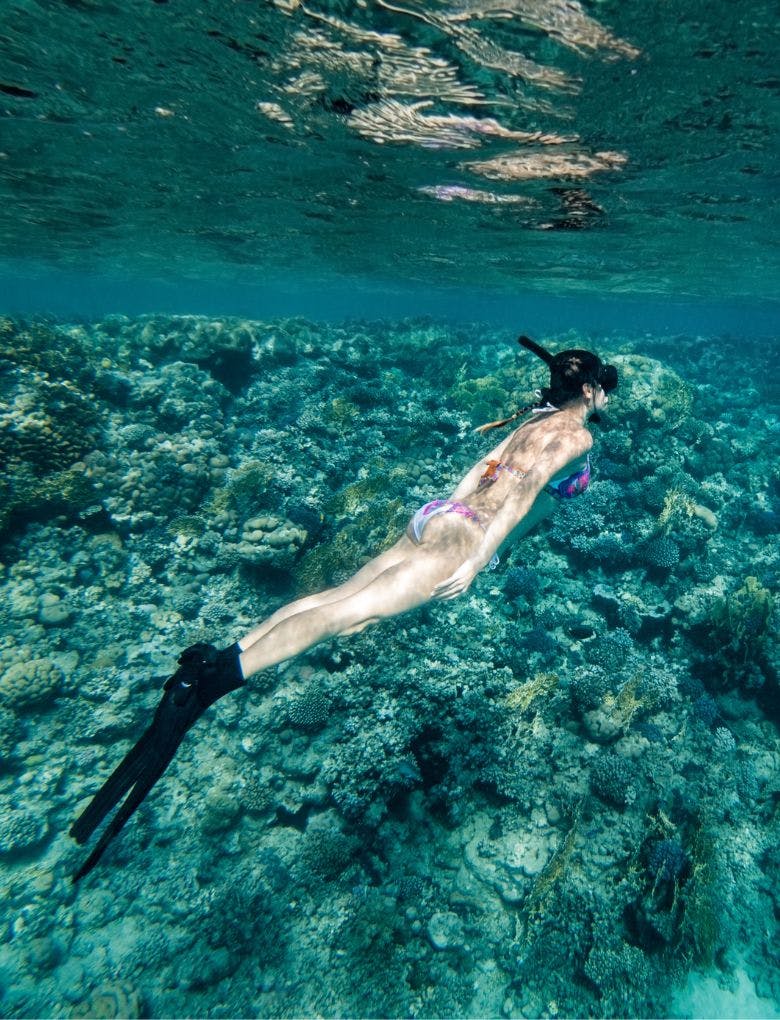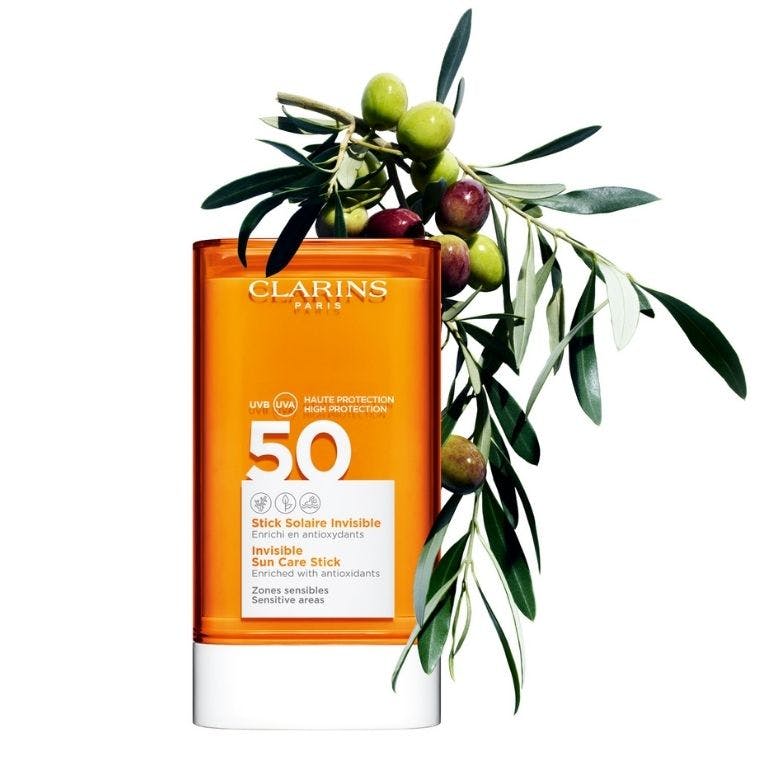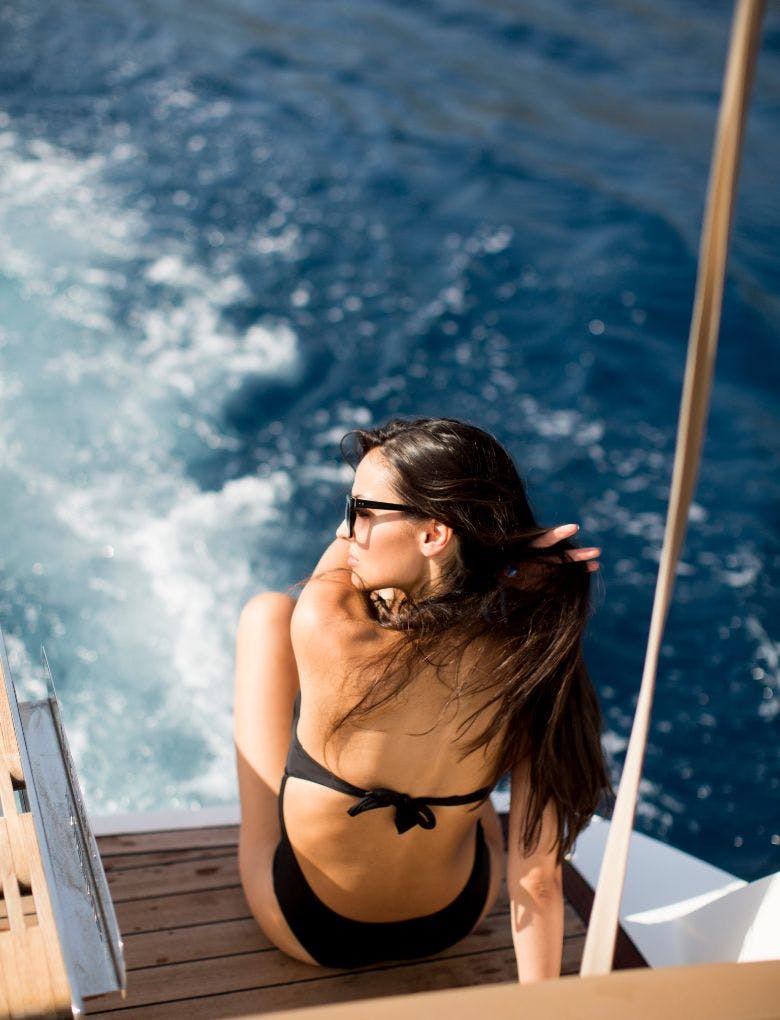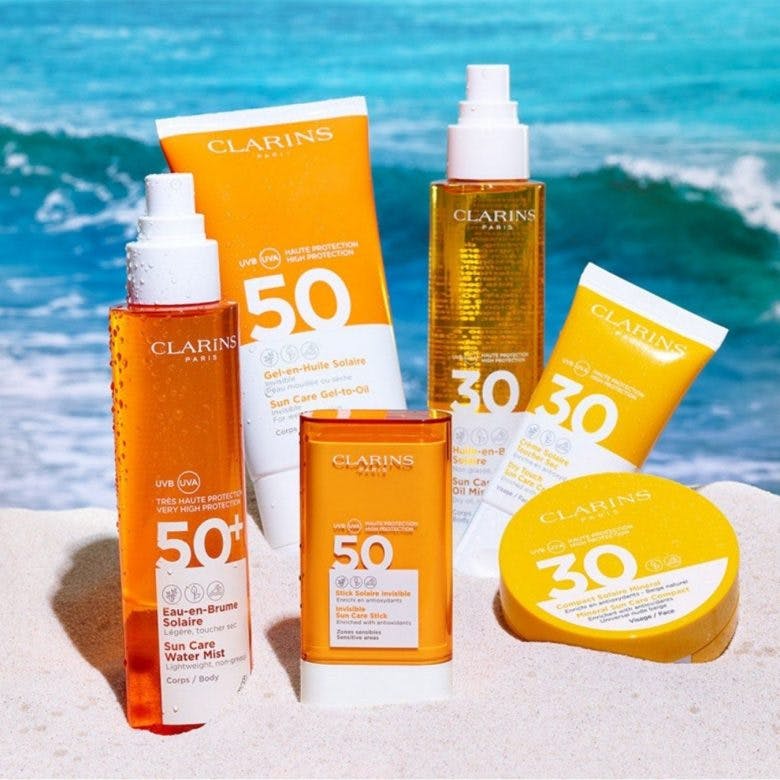Reef-Friendly Sunscreen: Why it’s Better For You & The Planet
6 minutes read
If the concept of reef safe sunscreen has trickled into your subconsciousness, but you’re not entirely sure what the term means, don’t worry; you’re not alone. While protecting our skin from the sun is vitally important, there’s also an environmental impact on our choices when purchasing sunscreen. Over the last few decades, leaps and bounds have been made in research around sun safety, and now, thankfully, most of us are reaching for SPF every day.
However, now there is a new conundrum. Research has shown that sunscreen pollution is causing real problems in our oceans. In fact, up to 6,000 tons of sunscreen – that’s the weight of 50 blue whales – washes through the U.S reef areas every year, according to the National Park Service. It’s fantastic that we’re protecting our skin, but how can we do it in a reef-friendly way for marine life and the environment?
It’s hard to tell just by looking at a coral reef how critical they are. They’re ecosystems that form a large part of the marine environment; in fact, 25% of underwater species rely on them for food, shelter and a place to breed. In addition, they help keep the sea floor stabilised, prevent coastal erosion, plus filter and clean the seawater.
And the list goes on: coral reefs also generate 70% of the Earth’s oxygen and regulate the carbon dioxide levels produced when fossil fuels are burned. In other words, we need the coral reef to keep our oceans and, therefore, the Earth healthy. “Sunscreen pollution is a real phenomenon, and it poses a threat to coral reefs and aquatic life. It’s also a major factor in decreased water quality,” says Craig Downs, the executive director of Haereticus Environmental Library.

Reef-safe sunscreens: what are they?
So, what can we do? First, purchase coral reef safe sunscreen wherever possible, which means sun protection free of chemical ingredients or tiny particles that can damage or kill coral reefs.
How do some sunscreens damage coral reefs?
The good news is that research is being done every day to combat this problem. So far, two nasties have been singled out as being particularly unsafe for coral reefs: oxybenzone and octinoxate. These two chemicals work in sunscreen by absorbing UV rays, but research has shown that when coral came into contact with the substances, it showed signs of distress and became bleached white. Once bleached, coral is far more susceptible to infection and disease and cannot absorb the nutrients it needs.
“It was strange to see that oxybenzone made sunlight toxic for corals — the opposite of what it is supposed to do,” said one study. “The compound is good at absorbing light… which is why it’s so common in sunscreens.” In fact, in 2021, Hawaii went as far as to ban sunscreen containing these two chemicals, the first place in the world to do so.
Save The Reef is an organisation aiming to raise awareness of what we as consumers can do every day to help keep our coral reefs as healthy as possible. They suggest starting by nixing any sunscreen or product that contains any of the following ingredients from your shopping basket, as they pose a threat to our precious ecosystems:
- Oxybenzone
- Octinoxate
- Octocrylene
- Homosalate
- 4-methylbenzylidene camphor
- PABA
- Parabens
- Triclosan
- Any nanoparticles or ‘nano-sized’ zinc or titanium

How to tell if a sunscreen is reef-safe
When shopping for sunscreen, always look for a reef-safe or reef-friendly label. For example, Clarins have added a little ‘coral’ logo on the packaging – so it’s easily identifiable and means you don’t have to wade through the long list of ingredients.
Some retailers, especially if you’re not shopping from a regulated source, will add a title to draw in environmentally conscious customers without doing their bit to ensure their sunscreen is actually reef safe. So, it’s a good idea to check the ingredients list for any of the above potentially dangerous ingredients, most importantly, looking for a sunscreen that is oxybenzone and octinoxate free. Plus, avoid the aerosol sprays as these often contain micro-particles, easily breathed in and can damage not only coral but your lungs, and usually not a good enough protective layer either – so you burn too.
Read next: Can You Reverse Sun Damage? Read On…
Parabens also take years to biodegrade, and coral can easily consume nanoparticles because of their small size. So to be appropriately reef safe, the particle size of your sunscreen needs to be above 100 nanometers. In simpler terms, this often means opting for a cream or lotion SPF instead of a mist or spray, as these will often contain these tinier particles that coral reefs can ingest. Also, look out for third party certifications like Protect Land + Sea when navigating the sunscreen aisle.
Save The Reef advises shopping for a sunscreen that uses physical UVA and UVB filters instead of chemical ones. You’ll be able to spot these on an ingredients list as zinc oxide and titanium oxide. They work by forming a physical barrier between your skin and the sun instead of a chemical one. You could also consider wearing a rash guard when swimming; this means you’ll need less sunscreen as more of your skin will be covered up (but please don’t scrimp on areas like ears and the back of the neck.)

Opt for a water-resistant sunscreen; it’ll adhere better to your skin when swimming. Biodegradable sunscreen is also a better bet as it will break down in a shorter amount of time.
Why is it important to use coral safe sunscreen?
Interest in reef-friendly sunscreen has surged to such heights that the National Academy of Sciences has experts reviewing all the research, with plans to release a report on their findings later this year. So, watch this space.
So, while we wait for more information, the best thing we can do is make the most informed choices possible. SPF is vital, and it’s so important that we protect our skin from the sun every day whilst doing as much as we can to help our planet.
Read next: The Sincere products The Beauty Daily Staffers Swear By
What are the best coral safe sunscreens on the market?
Consider picking up one of the below reef-safe sunscreen options on your next sunscreen pit stop.
Clarins Suncare Range

Clarins’ extensive range of sun protection provides a coral-safe solution for every skin type and need, plus soothing after-sun for post-beach moisturisation.
Tropic Great Barrier Sun Lotion
Protect Land + Sea certified is a non-greasy, broad-spectrum and water-resistant SPF that is, of course, reef-friendly too.
Green People Scent Free Sun Cream
This gentle lotion is an excellent choice for sensitive types and comes in fully recyclable plant-based packaging.
Holland & Barrett 100% Mineral Sunscreen
Infused with oils and antioxidants, this 100% mineral sunscreen will leave your skin feeling nourished and protected.
Read next: World Ocean Day – How you can help
Sign up for our newsletter
We will keep you in the loop for special offers, exclusive gifts and product news.

